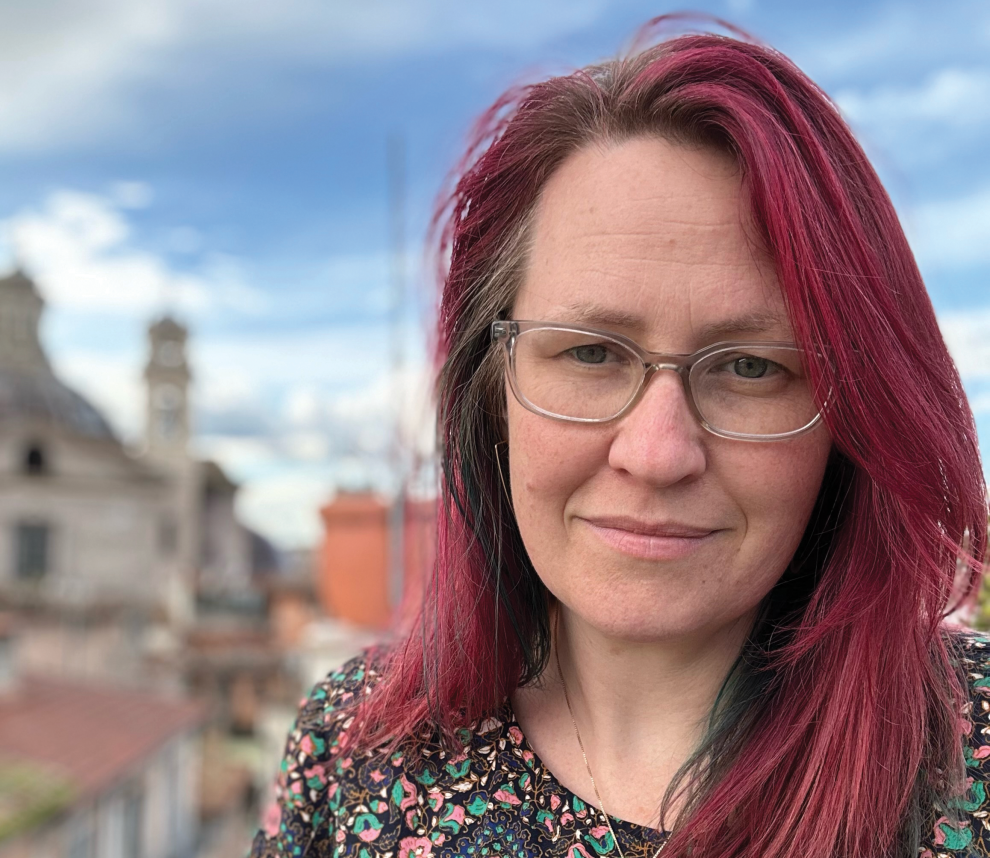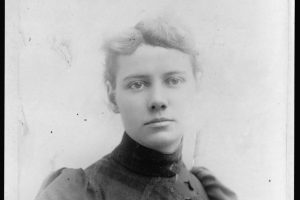When she was young, Kay Perdue Meadows never imagined she’d grow up to be a catechist. She also never imagined she’d grow up to be a Catholic. A convert to the church, Meadows was raised by secular parents in Boston. “God was just a fictitious idea when I was a child,” she says.
But today, Meadows is the New Haven, Connecticut program director for Catechesis of the Good Shepherd, a hands-on approach to religious education that invites children under 12 into a deeply personal relationship with God.
Catechesis of the Good Shepherd is an educational method developed in Rome in the 1950s by two women, Sofia Cavalletti and Gianna Gobbi, who applied Maria Montessori’s method of hands-on experiential learning to teach religious education to young children.
“Montessori was Catholic,” says Meadows. “She wrote a book about how the Montessori method could be applied to teaching children about faith.” Meadows goes on to explain that some of Montessori’s associates worked together to develop this method. “We truly believe that God and a child are in relationship already; it’s the adult’s job to make them conscious of this.”
Meadows sees her current vocation as rooted in her own upbringing. Although not religious, her parents deeply valued education and learning. They took her on international trips, sent her to a classical high school, and exposed her to people of different faith backgrounds. Her journey toward conversion began in earnest when she enrolled at the University of Chicago, where she met her husband, but it was in graduate school that she received spiritual guidance that ultimately led her to the Catholic faith.
Meadows and her spouse completed the Rite of Christian Initiation, received the sacraments at the Easter Vigil, and were married one month later. “We were very close to a family who provided us with deep counsel,” she says. “We were able to surrender our own wills to each other, embracing the reality of God, letting go of our own design, and surrendering to the sacrament of marriage. Those elements were so intertwined and happened right on top of each other.”
Very soon afterward, they had two children. “The first question on my mind was how to nurture faith in our children. I felt powerfully that I wanted our children to have a Catholic childhood, and I did not know what that was,” Meadows says. “I was directed by some people to Catechesis of the Good Shepherd. It spoke to me. It taught me how to pray when I hadn’t grown up in the church and didn’t know how expansive prayer can be.”
The curriculum has three levels: ages 3 to 6, 7 to 9, and 10 through 12. The space where the Catechesis takes place is called the atrium, representing the space where children prepare to enter the church. Most of the materials are handmade or hand-assembled—there is nothing plastic.
“In this environment children are taught to slow down, make themselves available to wonder, to practice concentration—like sorting beads into four colors that correspond to the liturgical calendar, preparing flowers, cutting the stems, putting the right amount of water in,” Meadows says. “There is bell practice, walking in slow motion, whispering—all of it meant to nurture the soul, to come to know what peace is available when we give attention to the small things. Level 1 is about building desire and wonder for beauty. How do we handle glass so it doesn’t break? How do we maintain the beauty of our environment?”
One specific example of an activity involves unravelling a long ribbon meant to symbolize the creation of the world. “Each rib represents 10,000 years of time. We roll it out it to show how long time is,” Meadows says. “It results in a feeling that nothing we’re currently surrounded by is an accident; we are standing on generations not just of people, but of God’s work before us, even to arrive to see what we see today.” She says that the ends of the ribbon are frayed, representing the reality that we don’t quite know when time began or when the end of time will come. “It’s really effective for children to see time represented that way,” she says.
While Meadows sees her work as a catechist as worlds apart from her day job as a producer at the Yale Repertory Theatre, part of the David Geffen School of Drama at Yale University, she sees a commonality in the focus on creating an environment where beauty can flourish. “In theater, we’re looking to create a space and environment that nourishes people’s artistic souls,” she says. “I’m trying to do this in the atrium inflected by the word of God, which I find to be the most inspired, inspiring thing there is.”
In a time of polarization and ideological division within the church and U.S. society generally, Meadows sees Catechesis of the Good Shepherd as one of the few places in the church where the divide yields no influence. She directs the program for the whole of New Haven, serving about 75 children from both conservative and progressive parishes.
“I’ve seen multiple Catholic identities come together in Catechesis of the Good Shepherd. Children are beyond politics,” she says. “Also, the teaching is not doctrinal. We are focused on the mystical story of Christ and the church. This is something that all Catholics seem to agree upon. Children receive this story with a purity of heart.”
Meadows is also intentional in representing the universality of the body of Christ. “In catechesis, if I don’t consciously include images of people of color, that means I am leaving them out. Some parents might think including images of people of color is politicizing, seeing images of Jesus as white as the ‘neutral’ thing,” she says. But while communicating across difference is labor intensive, Meadows sees it as a starting place for collaboration. “I’m using the microcosm of my experience to express the greater reality in the church.”
Catechesis of the Good Shepherd was a major part of Meadows’ conversion. She recommends it not only for children, but for their parents, who learn alongside their children. “It has such an open concept of what prayer is. If you are in concentration drawing a picture of the Good Shepherd and his sheep, that is prayer,” she says. “If you are sitting quietly with your eyes closed, that is prayer. Praying the rosary is prayer, as is saying ‘Amen’ in different ways. Just the practice of reverence is prayer. As all teachers say, you are teaching yourself while you teach others.”
While they prepare and lead numerous activities for the children, catechists in this program refrain from calling themselves teachers. “Jesus is the only teacher,” Meadows says. “We are merely there to guide. We listen to how the children guide themselves. This will open us up to who God is, because they are closer to God than us.”
This article also appears in the May 2024 issue of U.S. Catholic (Vol. 89, No. 5, pages 45-46). Click here to subscribe to the magazine.
Image: Courtesy of Kay Perdue Meadows














Add comment